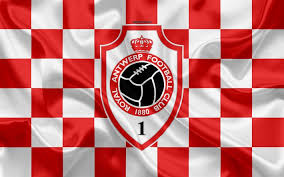Royal Antwerp FC, one of the most storied football clubs in Belgium, commands a rich heritage that spans over a century. Known as The Great Old, this iconic team has witnessed football’s transformation from its earliest days, carving out memorable chapters in Belgian sports history. From its early founding years through periods of glory, struggle, and resurgence, Royal Antwerp FC has always embodied a unique spirit deeply cherished by its loyal supporters. This deep dive will explore the club’s intricate past, delve into the culture that surrounds it, analyze its modern-day development, and speculate on what the future might hold for this revered Belgian institution.
The Origins and Early History of Royal Antwerp FC
To truly understand Royal Antwerp FC, one must first appreciate its genesis and formative years. This section delves deep into how the club was born, the socio-cultural backdrop of its founding era, and the early tales that shaped its identity https://kubetvn.domains/.
Founding Roots and Historical Context
Royal Antwerp FC holds the distinction of being Belgium’s oldest football club, officially founded back in 1880 as part of an English student initiative.
In the late 19th century, sports were primarily the pastime of the elite and expatriate communities in Europe. British influence was instrumental in spreading football across the continent, with Antwerp’s port city status making it a natural hub for cultural exchange. A group of English students introduced football to their Belgian peers, culminating in the establishment of Royal Antwerp FC — originally called Antwerp Football Club.
This cross-cultural genesis imbued the club with a strong British identity, reflected in early playing styles, organizational methods, and sporting values. The pioneering spirit of those times laid the foundation not just for the club itself but also for Belgian football as a whole, as Royal Antwerp FC played a key role in popularizing the sport nationwide.
As industrialization accelerated, the sport began trickling down from elite circles to working-class enthusiasts. Antwerp’s diverse population embraced football, fostering a melting pot of fans who saw the sport both as entertainment and community expression. These sociological shifts during the club’s embryonic stage deeply influenced its inclusive and passionate supporter base.
Growth Through the Pre-War Period
With its early foothold established, Royal Antwerp FC entered an era of consolidation and gradual growth during the pre-war decades.
The introduction of national competitions provided the club opportunities to test itself against emerging rivals. Their participation in Belgium’s inaugural football championship cemented their status as a foundational pillar in Belgian football. Rivalries with other historic teams such as Standard Liège, Anderlecht, and Club Brugge began taking root, shaping competitive narratives still relevant today.
During these formative years, the club experienced fluctuations in performance. Sometimes they challenged for titles; other times struggled amid financial or strategic difficulties. However, even in lean spells, The Great Old’s continued presence in domestic competitions contributed immensely to establishing Belgian football’s league system and traditions.
Player recruitment during this era often emphasized local talent, reflecting the close bonds between club and city. Footballers were not global superstars but ordinary men representing their neighborhoods. This grassroots connection fueled loyalty and embedded the club within Antwerp’s social fabric, creating a sense of collective pride that transcended mere match results ku casino.
Impact of World Wars and Resilience
Like all European institutions, Royal Antwerp FC faced enormous challenges during the two World Wars.
Both conflicts disrupted domestic leagues, caused displacements, and led to tragic losses within the wider community. Many players served or were affected by wartime turmoil, halting the momentum of sporting progress. Yet, time and again, the club re-emerged with renewed determination, symbolizing resilience and unity amid adversity.
Post-World War I, Royal Antwerp FC helped restart Belgian football, acting as a beacon of normalcy and recovery. The post-World War II reconstruction era was equally significant, as the club navigated resource shortages and societal upheaval while striving to regain competitive footing.
This tenacity reinforced the bond between club and supporters, who rallied around The Great Old during dark times. The shared experience of hardship fostered a collective identity rooted in endurance and hope — qualities that remain woven into the club’s ethos today.
